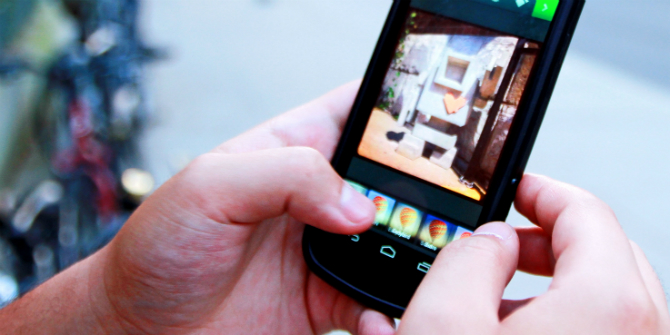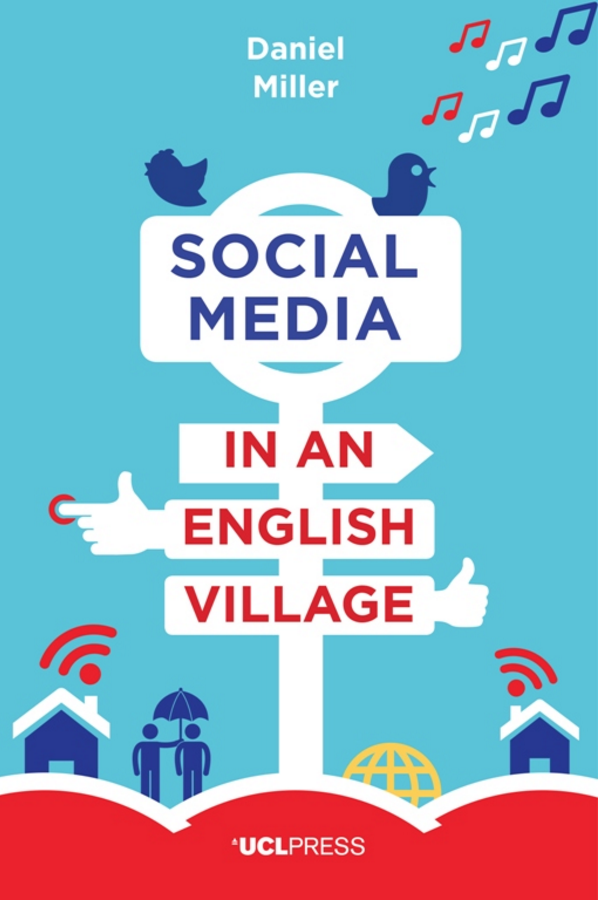Why We Post – Why people use social media around the world
April 1, 2016
PROJECTS: Preparing for a Digital Future
TAGS:
Nine anthropologists from University College London simultaneously spent 15 months in Brazil, Italy, India, China, Trinidad, Turkey, England and Chile to study how people around the world use social media. Alicia Blum-Ross takes a closer look at the Why We Post project and finds that it demonstrates that what young people do online has meaning, and is consequential to themselves and to others. Alicia is a researcher at the LSE’s Department of Media and Communications. She is interested in youth media production and is part of the Parenting for a Digital Future research project.

[Header image credit: J. Morris, CC BY-ND 2.0]
There’s no such thing as Facebook.
While that might be surprising for many parents to hear, that was the contention of anthropologist Daniel Miller’s previous work on social media. His work was based on long-term ethnography, including a focus on young people in Trinidad, and demonstrated that social media are altered and made anew (over and over again) in diverse places around the world. So there is no one singular form of Facebook, there are as many Facebooks as there are users and cultures of use. And now, when young people are not even on Facebook any more, the same can be said of Instagram or Snapchat or WeChat or… you name it.
 This premise has been the basis for a hugely ambitious project called Why We Post, led by Miller and a team of nine anthropologists at University College London. For 15 months, the nine anthropologists conducted simultaneous fieldwork in global sites in Brazil, Italy, India, China (a rural and a factory town), Trinidad, Turkey, England and Chile. This week, the project has culminated in the start of an online course and the launch of three of the books, which are open-access and translated into multiple languages. For those teaching about families, youth and social media (or parents wanting some interesting clips to discuss with your children!) the project has also set up a YouTube channel with hundreds of videos illustrating their findings.
This premise has been the basis for a hugely ambitious project called Why We Post, led by Miller and a team of nine anthropologists at University College London. For 15 months, the nine anthropologists conducted simultaneous fieldwork in global sites in Brazil, Italy, India, China (a rural and a factory town), Trinidad, Turkey, England and Chile. This week, the project has culminated in the start of an online course and the launch of three of the books, which are open-access and translated into multiple languages. For those teaching about families, youth and social media (or parents wanting some interesting clips to discuss with your children!) the project has also set up a YouTube channel with hundreds of videos illustrating their findings.
The contribution of the series of books is an even-more nuanced picture of how social media are used around the world. There are some similarities across the fieldsites – for example that the many more public-facing social media (Facebook, Twitter, Instagram, Weibo) ultimately work to conserve traditional hierarchies rather than creating the egalitarian societies sometimes imagined. This has also been discussed by contributors to our blog in relationship to gender in Pakistan and age in the Congo.
However their research also shows how people select the form of communication appropriate to what they particularly want to accomplish (Miller describes this as the ‘Goldilocks effect’ – finding the right form of media that’s not ‘too hot’ or ‘too cold’ for the intimacy you want to create). So more private forms of social media like WhatsApp can be used to circumvent hierarchies or accepted social norms, for example by enabling women to start small businesses (described here in the Sudan). Romantic relationships and youth culture in Turkey, demonstrated Elisabetta Costa of the UCL project, can be played out on WhatsApp away from the prying eyes of parents and relatives.
 Their project underlines that concerns about privacy are often about a known public, especially family and friends, rather than worries about government or commercial surveillance. However, Costa’s work in Turkey, along with that of Xinyuan Wang in China, notably shows the absence of political ‘speech’ on social media in favour of personalized politics and identity-work that can be read as political. Wang (in a forthcoming book) talks about how factory workers construct elaborate fantasy lives online, in contrast to life in squalid factory housing. One of the main theoretical contributions of this work is to describe social media as a form of ‘scalable sociality’ – as people use these platforms to negotiate between what they want to be public/private or accessible to a small group/large group. For example, Miller showed a short clip of a man in England who used Facebook as a means of announcing to his wider community about his battle with cancer. He had been diagnosed previously and close friends and family knew of his struggle, but at some point he made a judgement about the right moment, platform and means through which he wanted to include his known public in his life.
Their project underlines that concerns about privacy are often about a known public, especially family and friends, rather than worries about government or commercial surveillance. However, Costa’s work in Turkey, along with that of Xinyuan Wang in China, notably shows the absence of political ‘speech’ on social media in favour of personalized politics and identity-work that can be read as political. Wang (in a forthcoming book) talks about how factory workers construct elaborate fantasy lives online, in contrast to life in squalid factory housing. One of the main theoretical contributions of this work is to describe social media as a form of ‘scalable sociality’ – as people use these platforms to negotiate between what they want to be public/private or accessible to a small group/large group. For example, Miller showed a short clip of a man in England who used Facebook as a means of announcing to his wider community about his battle with cancer. He had been diagnosed previously and close friends and family knew of his struggle, but at some point he made a judgement about the right moment, platform and means through which he wanted to include his known public in his life.
For those interested in parenting, children and young people there is much relevant here. Each book has the same chapter structure so each, including the jointly written comparative book, has a chapter on ‘Education’ which includes both debates over the role of social media in schools, how parents view social media as a force for learning (or not) and how social media influence peer relationships for young people. Tom MacDonald from the UCL project summarized this on our blog in relationship to rural Chinese parents’ conceptions of social media as in competition with exam-preparation and achievement.
 But others, in particular in Shriram Venkatraman’s fieldsite in India, show how low-income parents see the networking and informational possibilities of social media as key to their children’s future success (we posted a similar discussion about parents in Mexico). Findings about negotiating ‘online vs. offline’ relationships (hint: there’s no such dichotomy any longer say the authors), negotiating the world of work, on the different genres of selfies (why do people post ‘footies’ in Chile and ‘uglies’ in England?) and more will be relevant to parents and others interested in the lives of children and young people.
But others, in particular in Shriram Venkatraman’s fieldsite in India, show how low-income parents see the networking and informational possibilities of social media as key to their children’s future success (we posted a similar discussion about parents in Mexico). Findings about negotiating ‘online vs. offline’ relationships (hint: there’s no such dichotomy any longer say the authors), negotiating the world of work, on the different genres of selfies (why do people post ‘footies’ in Chile and ‘uglies’ in England?) and more will be relevant to parents and others interested in the lives of children and young people.
Ultimately, the project demonstrates that what young people do online has meaning, and is consequential to themselves and to others. The hours that Italian young people spend preparing themselves to look good in selfies or game playing in Turkey or in Trinidad are not, as parents often fear, indicative of a descent into narcissism or social isolation. Instead social media are a central way for young people (and adults) participate in and build their communities. Parents would do well to understand the meanings behind these activities before they try to police them.


